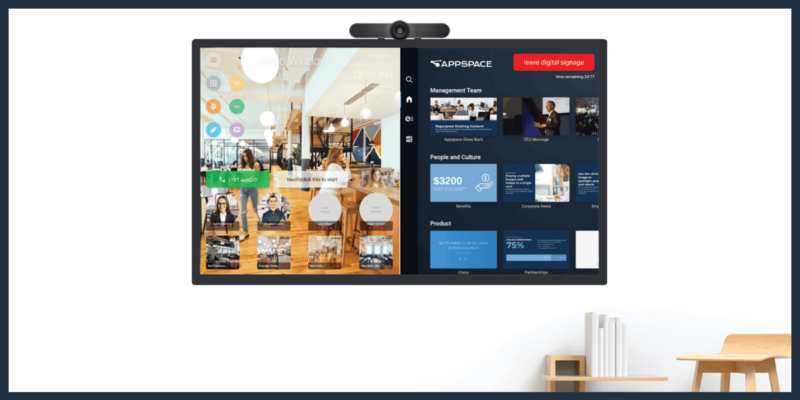A UCC Story in Real Life
I like sitting at Starbucks for an hour or two occasionally, writing a blog, listening to music. One day recently I’m there, not too crowded, some guy walks in and sets up his laptop at a table near mine. He gets on the phone and after about 10 minutes he’s talking a bit loud, sounds like he’s really hammering out a point almost straining to be heard. Hmm, wonder if he was on a conference call…

A conference call at a major publication
An article “Call Me Crazy” recently appeared in the New Yorker where the writer begins: I hereby uninvent the conference call. Praise the lord and pass the videoconferencing? Not quite yet.
The writer then spells out how there is no means by which six or twenty or, as she says, God forbid—a hundred people can all meet and discuss a topic over the phone and then points out how multiple people trying to speak at once sounds unwieldy and inefficient. Not sure I’ll find many who disagree with this.
Hmm, this reminds me of a past working experience.
The real life UCC experience sets in
This brings me back several years when I left the industry for an oh so brief moment (three months maybe) to go into SEO. I’m reminded of a weekly sales meeting that was called by the Executive VP of Sales (former Wall Streeter, real go-getter), a conference call with the whole sales staff – all 50 plus.
Now you ask, as the writer pretty much did, how can 50 plus people possibly meet over the phone to discuss topics, sales figures, etc.? And here’s the bigger question – just how did you know who was in the meeting in the first place except to get report-ins? I mean really, 50 plus (or however many) people report in? The meeting would be almost half over by the time that check-in was done (or take forever).
So the VP goes around – “hey John can you tell us about the big sale you pulled off last week? John? John? OK I guess John hasn’t arrived yet. Kathy can you tell us how you finally landed that client you were working on for three months? Kathy? Kathy?” I kid you not, this really happened in just about every meeting. He got flustered as hell – and really who could blame him, you mean people don’t show up for a conference call knowing 50 or more people may be there unseen? Then he finally finds someone who has attended the meeting to get some worthy discussion going (maybe).
I would sit in front of my laptop on mute when not talking listening to the sales-go-round, people talking over each other with stops and starts, apologies and more scratching my head and saying there has to be a better way.
Once when I had a big sales meeting lined up at a local client prospect’s office, I talked to him about using an online videoconferencing application that was popular at the time. I thought this would be highly advantageous to getting him in on the meeting, since he was in New York and we were in Virginia). His response? “I don’t use that, it’s old technology – we go with the conference call.” Not sure why he chose to not appear, as if he were actually at the meeting. Camera shy? This guy? That will lead me to another story coming up here.
Before I get deeper into the conferencing (video) and collaboration part, let’s move on to something from a few years back.
The conference call – on mute
In 2012, Blue Jeans told you to watch “all the sh*t that people do on mute.” As stated on the video’s YouTube page: Everyone has assumptions about what colleagues do on the other end of the line during audio conference calls. But now it’s time to poke fun at the ineffectiveness of audio-only conference calls.
And as we all know — sh*t that happens on mute doesn’t happen on video. Well, we’ll get to that.
I would bet that this was happening on some of those SEO sales meeting call-ins. Actually, I wonder if a cloud videoconferencing solution like Blue Jeans may have been the answer here for the article’s writer, as well as the SEO company?
OK we’ll move on, but hold that thought.
Skype for Business meetings to nowhere
In the summer of 2014 I remember talking with a company about potentially becoming a consultant for them. This company liked to do their online conferences with Skype for Business, I of course accepted the invites and would show up on video, figuring a videoconference.
One odd thing about these meetings though is that at no time would they ever show their face, I’m on camera waiting for their face to appear and it never does. Well, at least their live face – there was always a still image on the screen. I wasn’t sure what to make of that, camera shy?
Now I know more people than not like to use S4B for its audio vs. video, and I do know that at times they would be calling in from the road. However I know there were times when they said they were in the office, unless it was the home office in “the bathrobe” situation. I’m not sure I could appreciate that if I’m dressed and prepared for a meeting, as if I’m in the office in front of them – which we talk about videoconference almost resembling with facial expressions, gestures and more.
And honestly, for the most part these meetings didn’t end up going anywhere beside we’ll pick this up again next time. Great application, however its usage as a stand-alone solution sometimes leaves a lot to be desired.
A Head of Global Communications answers the New Yorker article
The day after the article appeared, the writer received many direct messages on her Twitter post. Included in the DMs was one from Polycom (I contributed one too), with a link to a blog.

The blog titled Response to: “Call Me Crazy” by Carrie Brownstein. The New Yorker May 16, 2016 issue was written by Polycom’s Head of Global Communications, Cameron Craig. It begins:
Dear Carrie,
We understand your frustration with conference calls. Who wants to deal with people talking over each other, unintelligible audio, buffering and folks going on mute while they are in a shower? You are not alone. We feel the same way!
The thing is, conferencing doesn’t have to be like this if you choose Polycom. Here’s 4 reasons why we actually like talking to each other through technology:
Craig then goes on to detail the technology, how to have highly engaging meetings and more while also telling her she’s not crazy after all, that she’s just not using the latest and greatest conferencing solutions like those from Polycom as he points out.
In fact, I’ll take this one step further to say that anyone in business who leaves conference calls frustrated, just why are you still using this method of communication and collaboration (which I’ll actually refer to as zero collaboration)?
The article’s writer, pointing to the stops and starts, no you goes and the “put the ideas in writing” truce ends it:
Acknowledging that we’ve engaged in the discourse equivalent of a toddler’s squiggle drawing. Hinting that next time we play Marco Polo we could try a swimming pool instead of the Indian Ocean.
So many types of solutions to remedy this, including the ones named here, to help avoid this type of situation from ending in a total draw.
… at the end of his call, the loud guy packs up, tosses his coffee cup hard into the trash and leaves pretty frustrated. I watch him go and then I imagine industry sales people getting on the phone to set up the sales appointment with the New Yorker to introduce one or more of the well-known videoconferencing platforms.
Now back to my coffee, and a real life blog on UCC.
You can read Carrie Brownstein’s New Yorker article “Call Me Crazy” here.
Read Cameron Craig’s blog here.
Oh yes, and of course a great “Real Life” video by Tripp and Tyler.





